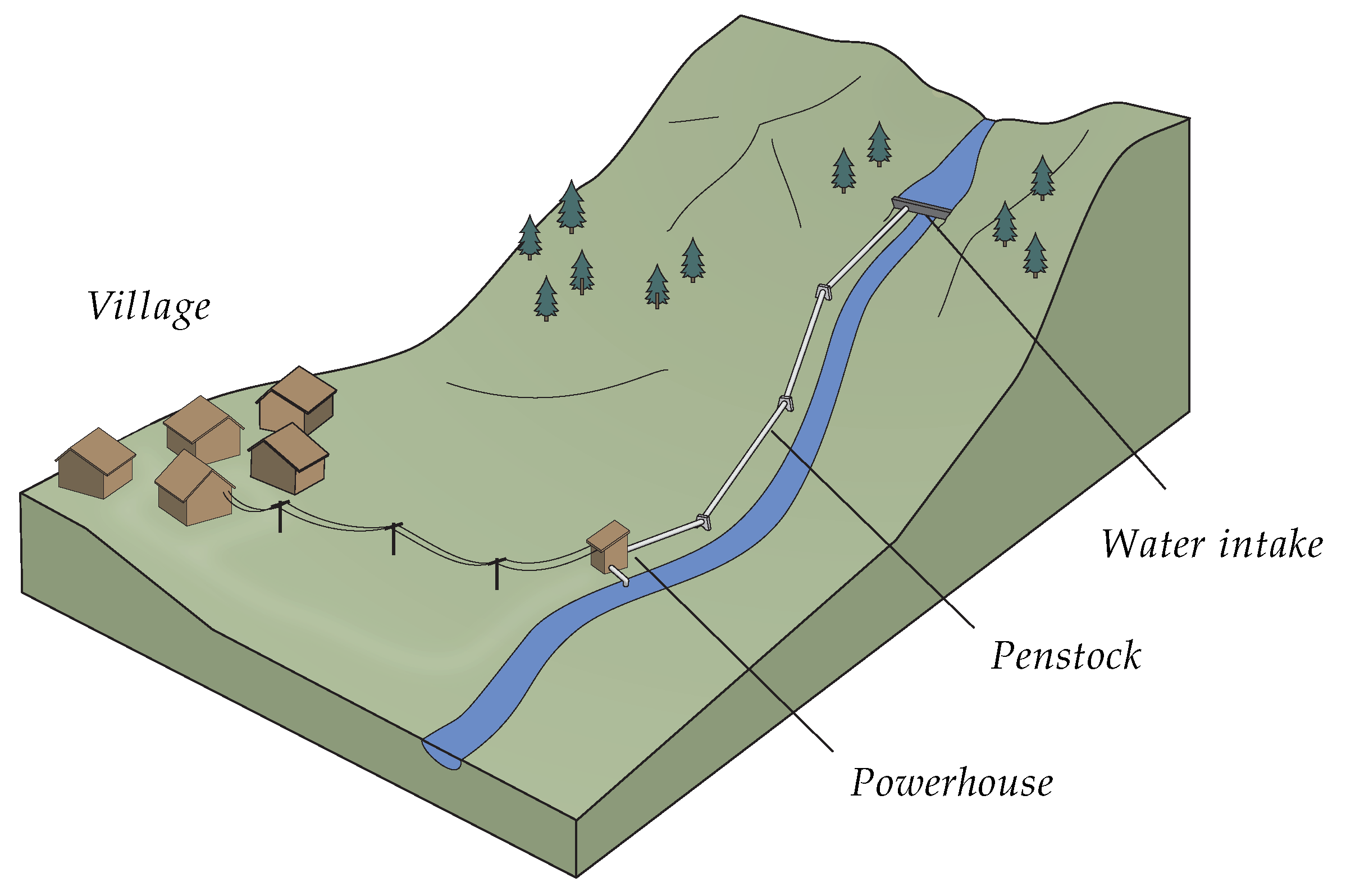Small Hydropower
Small hydropower refers to hydroelectric power plants with a capacity of up to 10 megawatts. These systems can provide clean, renewable energy for local communities while minimizing environmental impacts compared to large-scale hydropower projects.

Scheme of a typical Micro-Hydro Power Plants (MDPI Open Access Journals)
View open jobs in this Solution
Example Organizations
- International Hydropower Association (IHA) - Promotes sustainable hydropower development globally.
- Small Hydropower Association (SHPA) - Advocates for small hydropower development and policy support.
- International Renewable Energy Agency (IRENA) - Supports countries in their transition to sustainable energy futures.
Hydropower companies
Sourced by HolonIQ these do not necessarily qualify as "small" hydropower
AW-Energy
Bombora Wave Power
Carnegie Clean Energy
CorPower Ocean
Ingine
Ingine Pacific
Resen Waves
Seabased
Wave Swell
Overview
Small hydropower development has contributed to greenhouse gas emission reduction through innovations like micro-hydro turbines. These efficient systems can provide power in diverse settings, including remote villages lacking grid access.
Progress Made
Significant advancements have been made in small hydropower technologies:
- Micro-Hydro Turbines: Development of efficient, small-scale turbines for local power generation.
- Run-of-River Systems: Low-impact hydropower systems that don't require large reservoirs.
- Fish-Friendly Turbines: Innovations to reduce impacts on aquatic ecosystems.
Natel Energy - see article A Once-in-a-Generation Opportunity to Modernize Hydropower and Protect the Fish in Our Waters - by MCJ
Solutions by Sector
Rural Electrification
- Off-Grid Systems: Providing electricity to remote communities.
- Hybrid Systems: Combining small hydropower with other renewables for reliable power.
- Productive Use Applications: Powering local industries and agriculture.
Case Studies:
- Bhussa Micro-Hydro Project, Nepal: 15 kW system providing electricity to 240 households (UNDP).
- Sarhad Rural Support Programme, Pakistan: Network of micro-hydro plants serving over 365,000 people (SRSP).
- Tungu-Kabiri Micro-Hydro Project, Kenya: 18 kW community-owned project powering local businesses (Practical Action).
Grid-Connected Systems
- Small-Scale Hydropower Plants: Feeding clean energy into national grids.
- Retrofitting Existing Infrastructure: Adding power generation to non-powered dams.
- Pumped Storage: Using small-scale systems for energy storage.
Case Studies:
- Rothes CoRDe Ltd, Scotland: 2 MW small hydro plant integrated with a whisky distillery (Dulas).
- Fox River Locks, USA: Retrofitting navigation locks for power generation (Eagle Creek Renewable Energy).
- Linthal 2015, Switzerland: 1,000 MW pumped storage project utilizing small reservoirs (Axpo).
Environmental Services
- Ecological Flow Management: Using small hydro to maintain river health.
- Water Quality Improvement: Aeration systems powered by small hydro.
- Flood Control: Integrating small hydro with flood management infrastructure.
Case Studies:
- River Trent, UK: Small hydro system helping to manage river flows for ecological benefits (Environment Agency).
- Lake Elsinore, USA: Hydropower project improving lake water quality (Nevada Hydro Company).
- Oder River, Poland: Small hydro integrated with flood control systems (Regional Water Management Board in Wrocław).
Lessons Learned
- Renewable Energy Source: Small hydropower can be a crucial tool in combating climate change.
- Cost-Effectiveness: Often competitive levelized costs of electricity (LCOE) compared to other renewables.
- Grid Stability: Contributes to grid stability and flexibility, aiding integration of variable renewables.
- Environmental Considerations: Careful planning and stakeholder engagement are crucial for success.
Challenges Ahead
- Cost Barriers: High upfront costs, particularly challenging in developing nations.
- Technical Hurdles: Ongoing need for innovation in turbine design and system efficiency.
- Environmental Impacts: Potential alterations to hydrology, habitat loss, and community displacement.
- Regulatory Challenges: Complex permitting processes and varying support policies across regions.
Best Path Forward
- Research and Development: Invest in improving turbine efficiency and reducing environmental impacts.
- Policy Support: Implement supportive policies and streamlined permitting processes.
- Capacity Building: Enhance local skills and knowledge for project development and maintenance.
- Integrated Planning: Consider small hydropower within broader watershed and energy system planning.
- Sustainable Finance: Develop innovative financing mechanisms to overcome high upfront costs.
Image credit: MDPI Open Access Journals